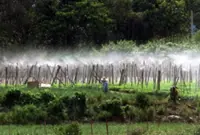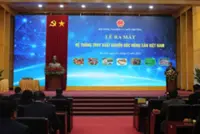(caption story) Bario rice, red rice from Kanowit and black glutinous rice can be found at a "tamu" (market) in Miri specialising in traditional products and jungle produce. According to a seller, the rice comes from villagers from Bario and the interior. Other produce sold at the market include highland salt and belacan. - ZULAZHAR SHEBLEE / The Star
KUCHING: Sarawak is embarking on large-scale rice cultivation in efforts to make the state the new rice bowl of Malaysia.
More than 10,000 hectares of land in four areas in southern Sarawak have been identified as suitable for rice cultivation and will be planted with hybrid rice seeds originating from Vietnam, according to Sarawak Premier Tan Sri Abang Johari Tun Openg.
Already a subscriber? Log in
Save 30% OFF The Star Digital Access
Cancel anytime. Ad-free. Unlimited access with perks.





